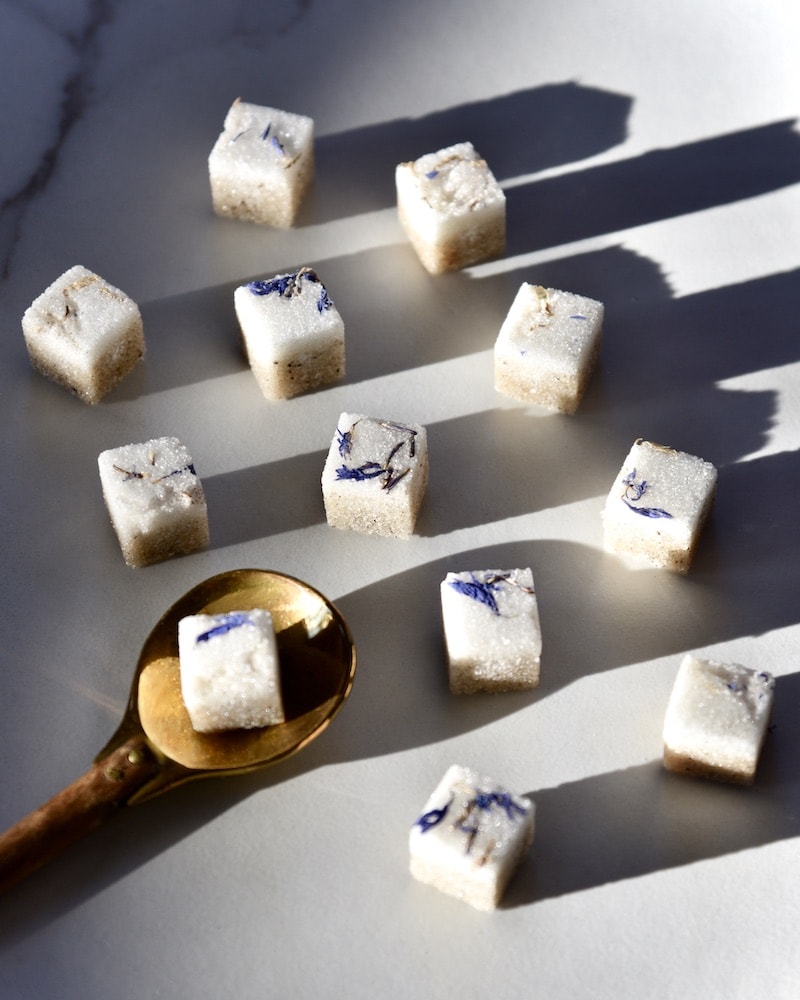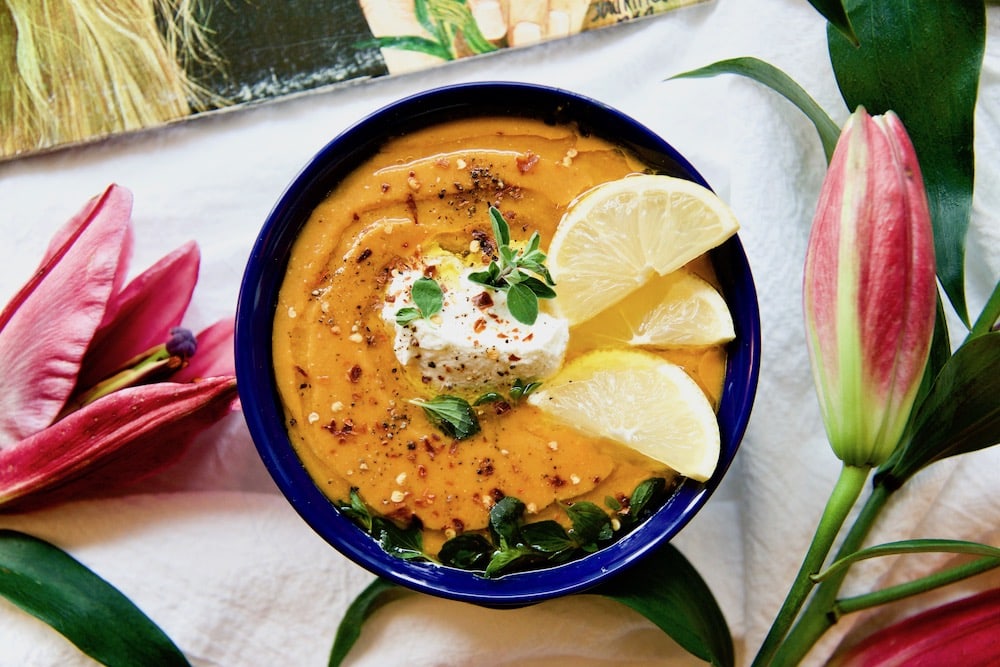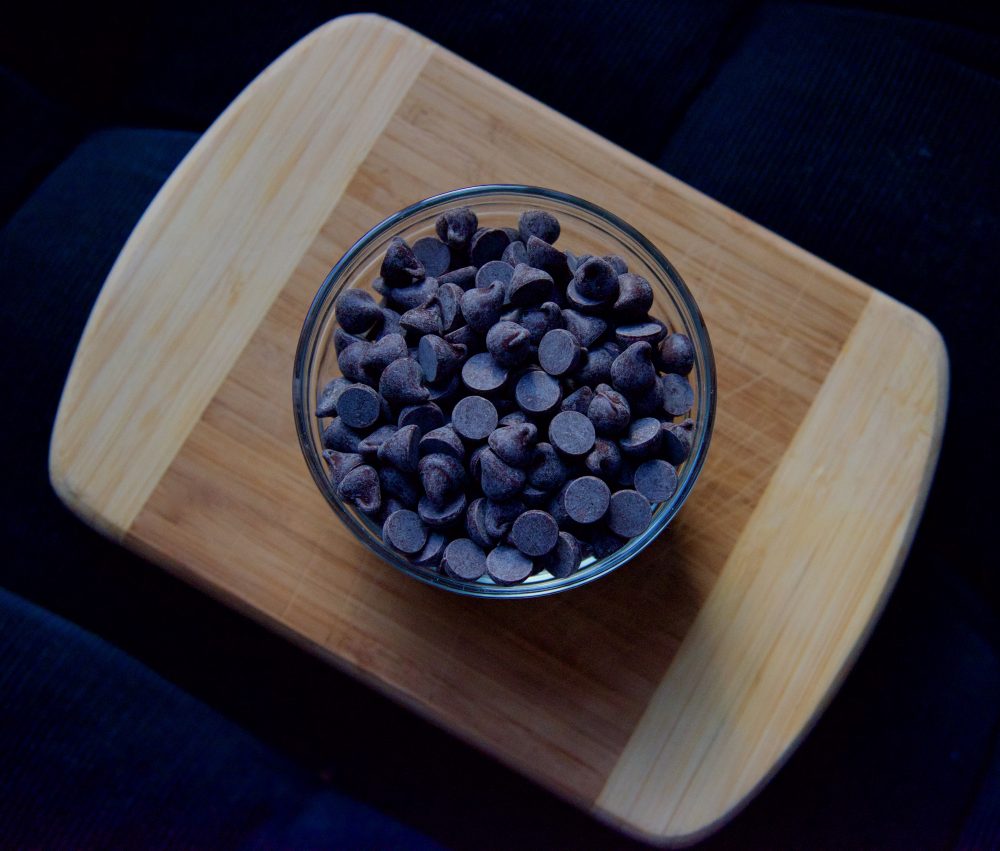Also known as the “Winter Blues,” Seasonal Affective Disorder is a feeling of mild depression or anxiety that manifests during the cold, grey winter months. (It’s also sometimes referred to as the very appropriate acronym, SAD.)
SAD symptoms include everything from fatigue, lethargy, and difficulty waking up to extreme anxiety, lack of motivation, and decreased sex drive.
An estimated 10 million Americans suffer from Seasonal Affective Disorder each winter, but most don’t know it. What’s worse, SAD is four times more common in women than men, which adds to the running list of mental burdens that women face in undue proportion.
Fortunately, there are a number of diet and lifestyle changes that can help mitigate symptoms.
Below, we explore which foods to incorporate and avoid for seasonal affective disorder. We also include a few lifestyle recommendations that will make grey days more tolerable.
***
Foods That Ease Symptoms of Seasonal Affective Disorder

Folate-Rich Foods Like Spinach and Lentils
Dark leafy greens, legumes, and asparagus are all excellent sources of folate, also known as Vitamin B9 or folic acid. Folate is a water-soluble B vitamin that is critical for cell division, and it also regulates mood and energy.
Some researchers even believe that people who demonstrate low blood levels of folate have an increased risk of depression. In fact, folate supplements that contain methylfolate (5-methyl-THF) may increase the efficacy of select anti-depressant medications. However, as with most nutrients, it is always better to eat them rather than get them through a pill.
Turkey
Turkey is a good source of the amino acid tryptophan (the one that causes post-meal sleepiness at Thanksgiving). However, tryptophan actually also improves mood, and is thought to work synergistically with the mood-boosting effects of light therapy. (Nothing like a turkey sandwich on a sunny day, amirite?)
Tryptophan is also present in chocolate, oats, dates, and certain fortified dairy products like yogurt and eggs.
Foods Rich in Omega-3 Fatty Acids (e.g. Salmon, Flaxseeds, Walnuts, Hemp)
The human body cannot synthesize omega-3 fatty acids. As a result, you have to eat them.
Naturally occurring sources of Omega 3s include fatty fish like salmon and mackerel, as well as nuts and seeds like hemp, flaxseeds, and walnuts. These readily available Omega powerhouses are easy to incorporate into meals and snacks. Do this regularly to get the maximum benefit.
Recently, Omega-3 fatty acids have also emerged as a potential agent in the treatment and prevention of depression, though more studies need to be conducted before scientists will be able to determine the best practices for dosing and bioavailability. Until that time: eat more nuts.
Bananas
Bananas are also a rich source of folate, potassium, and magnesium, which latter can help improve sleep and relieve symptoms of anxiety.
Ordinary bananas are also one of the best foods for preventing performance anxiety. (Some studies show that eating two bananas can reduce nerves because they “prevent adrenaline from binding to beta receptors” when your pulse rises. Bananas are also rich in B vitamins, which soothe nerves.)
The complex carbohydrates found in bananas also increase the production of happiness-inducing serotonin, which is an added bonus.

Dark Chocolate
Chocolate is rich in antioxidant flavonoids, which can increase feel-good neurotransmitters like serotonin in the brain. Dark chocolate has a higher concentration of flavonoids than milk chocolate, which also typically has more fat, sugar, and preservatives.
To maximize health benefits, consume fair trade, organic dark chocolate whenever possible.
Related: Make This Vegan Double Chocolate Zucchini Bread or these Dopamine-Boosting Gluten-Free Dark Chocolate Peanut Butter Brownies.
Berries
Blueberries, strawberries, blackberries, raspberries, and gooseberries are all great sources of winter-worthy antioxidants. Dark berries like acai contain a super antioxidant called anthocyanin, which has neuroprotective benefits.
Since the brain becomes more susceptible to oxidative stress as we age, eating plenty of brain-boosting antioxidants is key. This is especially important in the winter when demands on the immune system are higher.
Some Additional Lifestyle Hacks for Seasonal Affective Disorder

Plan Your Sunlight
Use a Happy Light or aim to get 15 minutes of exposure to natural light within 30 minutes of waking. (You get more mileage from what little sun is available in the winter if you are exposed to it early in the morning.)
Morning sun packs the most punch! If you can’t get sun in the morning, try to get some during the height of the day when the sun is strongest. For example, during a lunchtime walk outside. Spending time in nature has also been scientifically proven to reduce stress and anxiety.
For those who want a more targeted light therapy treatment, Luminette’s Light Therapy Glasses work wonders. I love them.
^ These glasses were developed by sleep scientists and eye doctors in Belgium to direct a specific wavelength of light into your eyes that mimics sunlight without damaging ultraviolet light. Luminette is free from UV, infrared rays, and does not emit short-wavelength light below 450 nm.
Wear the classes for 20, 30, or 40 minutes a day at the beginning of the day and watch your mood improve in as little as 5 days. I love that they’re hands-free– so you can use them while answering email, writing a To-Do list, brushing your teeth, for example– though you may look like a character from Ready Player One while you wear them.
Up to 40% of people with SAD do not respond to light therapy, but the 60% percent that do find it VERY effective. Try it out!
If you don’t see an improvement after two weeks, double down on winter-proofing your diet and try to get more exercise. (At least 30 minutes of cardio 4-5 times a week for maximum benefit.)

Vitamin D3 and B12
Supplementing Vitamin D3 has also been shown to help mitigate symptoms of SAD, which are usually caused by Vitamin D deficiency.
Since there is conflicting evidence on the health benefits of supplemental Vitamin D, NIH recommends taking fermented cod liver oil, spending 30 minutes or less a day in the sun, or eating more mushrooms (any kind) to increase Vitamin D intake from natural sources. (Mushrooms grown in the sun are naturally high in Vitamin D. Something like a closed-loop hydroponic system that uses artificial light doesn’t yield nutritionally equivalent food, unfortunately.)
If you would rather supplement, Dr. Cannell’s Advanced D and Carlson Labs Vitamin D3 are also great, research-backed, peer-reviewed Vitamin D supplements.
Meanwhile, controlled trials of supplemental cyanocobalamin (vitamin B12) have also been shown to boost mood, at least in clinical trials. Vitamin B12 will also increase energy levels.
We recommend supplementing with MegaFood’s Vegan B12 if you cannot get your Vitamin B from food sources like bananas. (<– Their vitamins are all made from food rather than synthetic ingredients.)
Or, those with an Instant Pot can also make our signature Stress-Busting Turmeric Popcorn, which boasts a healthy dose of B vitamins derived from our favorite nutritional yeast seasoning.

Limit Sugar (Except Dark Chocolate, In Moderation)
Limiting sugar intake will also mitigate symptoms of anxiety and depression. The notable exception here is dark chocolate, which can be helpful in moderation (about 1 oz per day is sufficient). As if you needed another excuse to eat more chocolate!
Sugar has been linked to many adverse, inflammation-related health outcomes, including increased incidents of depression and anxiety. This trend is especially prevalent among men.

The Temperature of Food Matters
Eating warm foods like soup, cooked vegetables, and hearty meat will all contribute to a feeling of comfort and wellbeing during the winter. During this time it’s also helpful to avoid cold and raw foods like sushi, salads, and fruit.
The temperature of food will contribute to the way you feel, which is a theory espoused in both Chinese Medicine and Ayurveda (two ancient healing systems that are very effective when bridged with evidence-based science).
Ultimately, warm foods are comforting; cold foods are cooling. Try to avoid cold foods in winter as this will lead to excess chills that can trigger anxiety.

Exercise and Sleep More
Last but not least: get plenty of exercise and sleep. During the cold winter months, our bodies need more rest than in the summer because we’re getting less energy from ambient sunlight, and our bodies also have to expend more energy to keep ourselves warm. Think of it as “human hibernation”.
There is nothing wrong with you if you feel the need to get more sleep when it’s cold out. Unless, of course, you can’t get out of bed at all. (In that case, seek medical attention.)
Exercise has also been shown to significantly improve mood, and the proof is pretty conclusive; cardio is one of the best things you can do for your body and mind. Aim for 30 minutes of vigorous exercise a day– running, dancing, swimming, yoga, walking, and HIIT workouts are all great.
When you need relief, it’s also helpful to remember that spring is right around the corner. The feelings associated with Seasonal Affective Disorder are temporary. Winter is always shorter than you think– and with these easy lifestyle changes, it will feel even shorter.
***
Related: This healing hazelnut beet salad is full of anti-inflammatory brain-boosters that help fight fatigue, free radicals, and brain fog. Or, try making fresh chestnut milk or Joni Mitchell’s comforting lentil soup.
Related: How Climate Change Affects Your Mental Health.
This post contains Amazon Affiliate Links. As an Amazon Affiliate, we may earn from qualifying purchases, which is why we work our butts off to obsessively research and cross-reference all materials that we link to on this website. That means peer-reviewed research, only! Commissions help us keep the content of this page as accurate, up-to-date, helpful, and transparent as possible. There’s already so much crap information on the Internet, so we’re trying to solve for that. Thanks for reading!




Leave a Reply